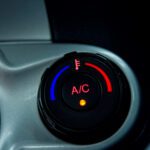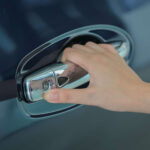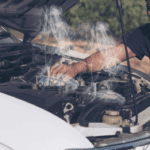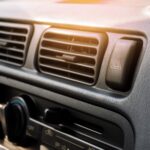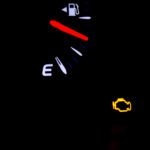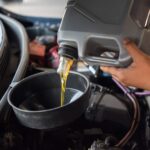The Anti-lock Braking System (A.B.S.) is a component of a car’s braking system that operates differently than most people realize. Unlike the traditional braking system, the A.B.S. is an electronically controlled system, so it’s unlikely that worn brake pads could directly cause the A.B.S. light to come on. However, it’s important to note that the reasons behind the brake pads being worn could trigger the A.B.S. light. This article will cover these reasons to better understand the A.B.S. system and the correlation between worn brake pads and A.B.S. light illuminating.
What Is the Anti-lock Braking System?
The Anti-lock Braking System (A.B.S.) is a safety feature in modern cars that helps drivers maintain control and stability during emergency braking situations. It prevents the wheels from locking up, which can cause the vehicle to skid and lose control.
The A.B.S. consists of several components, such as the pulsar ring, a magnetic pickup, and a modulator. When you apply heavy braking force enough to make the vehicle skid, the A.B.S. will react to the slide by releasing and reapplying the brake pressure via the brake fluid in milliseconds, allowing you to maneuver out of harm’s way and ultimately control the skid.
Can Worn Brake Pads Cause the a.b.s. Light to Come On?
Worn-out brake pads will not directly cause the A.B.S. light to come on. However, the result of worn brake pads, such as the low fluid level, means the brake pads need to travel further to apply braking pressure, which can cause the A.B.S. light to come on.
Another scenario that can cause the A.B.S. light to come on when you have worn brake pads is that it can cause the wheel to spin or slip at a different rate under braking; the A.B.S. may detect what it thinks is an issue triggering the A.B.S. light to come on.
What Causes the a.b.s. Light to Come On?
Although worn brake pads will not cause the A.B.S. light to come on, many components in the A.B.S. system can. The most common are:
- Low brake fluid level – A low brake fluid level can interfere with the A.B.S. as it uses the brake fluid to regulate the braking force applied. A dangerously low fluid level would cause the A.B.S. to become inoperable and illuminate the indicator.
- Faulty A.B.S. sensor – The sensor is a magnetic pickup located on the wheel hub. They become faulty for many reasons, including impact damage from debris in the road. A faulty sensor will bring the A.B.S light on.
- Broken A.B.S. wire – Similar to the A.B.S. sensor, the wire that connects to the A.B.S. sensor can be cut or damaged by debris on the road. Any breakages in the wire will illuminate the A.B.S. light.
- Faulty A.B.S. modulator – The A.B.S. modulator is the pump with multiple valves allowing brake fluid to pass through to apply or reduce the brake pressure. The valves can become stuck open or closed or just become faulty in general. Also, debris can get inside if it finds its way into the brake fluid reservoir, causing damage.
- Broken A.B.S. pulsar ring – The Pulsar ring sits around the driveshaft, with the A.B.S. sensor sitting a few millimeters away; a build-up of dirt and debris can cause the pulsar ring to get damaged. Equally, debris can damage the teeth on the ring and cause the A.B.S. light to illuminate.
- A.B.S. deactivated – In some vehicles, it is possible to turn the A.B.S. off. On sports vehicles, specifically, the A.B.S. can be more of a hindrance than a help under heavy braking. It will illuminate the indicator to remind you as soon as it is turned off.
- Faulty software – The car’s E.C.U. controls the A.B.S.; faulty software, just like a virus on a computer, could cause an issue with the A.B.S.
Once the light has triggered, it’s virtually impossible to find the reason it’s on without plugging the car into a diagnostic machine to read the fault code, similar to a check engine light coming on.
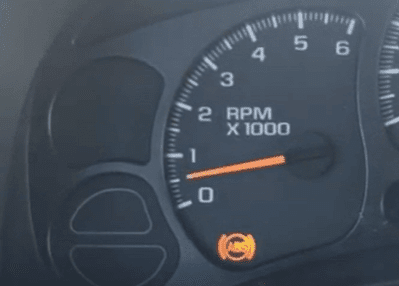
Can You Drive With the a.b.s. Light On?
I do not recommend driving with the A.B.S. light on, even if you think it may be safe. While older vehicles did not have A.B.S., so you may think it’s okay to drive with it disabled, modern cars are designed to have it functioning at all times. Without A.B.S., traction control systems and electronic stability control will not work, so you might be unable to avoid an emergency, such as braking suddenly to avoid debris or another vehicle.
The thing with driving with an A.B.S. light on and why I or anyone else will tell you not to is that you need to read the stored fault code to know what’s caused it. To warn you, if the fault is due to a failed modulator, driving can become dangerous. A faulty modulator can apply harder brake pressure even when the brake pedal is only pressed slightly.
What Should You Do If The A.B.S. Light Comes On?
If the A.B.S. light comes on while driving, avoid hard braking and drive cautiously. Once the light has been triggered due to a fault, the stored code will need to be read, which will require a diagnostic tool. For safety reasons, I recommend taking the vehicle straight to a mechanic to repair the fault and reset the light.
Final Thoughts
Although worn brake pads will not cause the A.B.S. light to illuminate, the surrounding supporting components that are worn or broken may cause the A.B.S. light to come on, and worn brake pads may be a coincidence. Once the A.B.S. light has come on, you should avoid driving. An A.B.S. warning light means the A.B.S. is inoperable and can only be diagnosed by plugging the vehicle into a diagnostic machine to read the fault. Most mechanics will have the tools needed to do this and repair the defect quickly.
